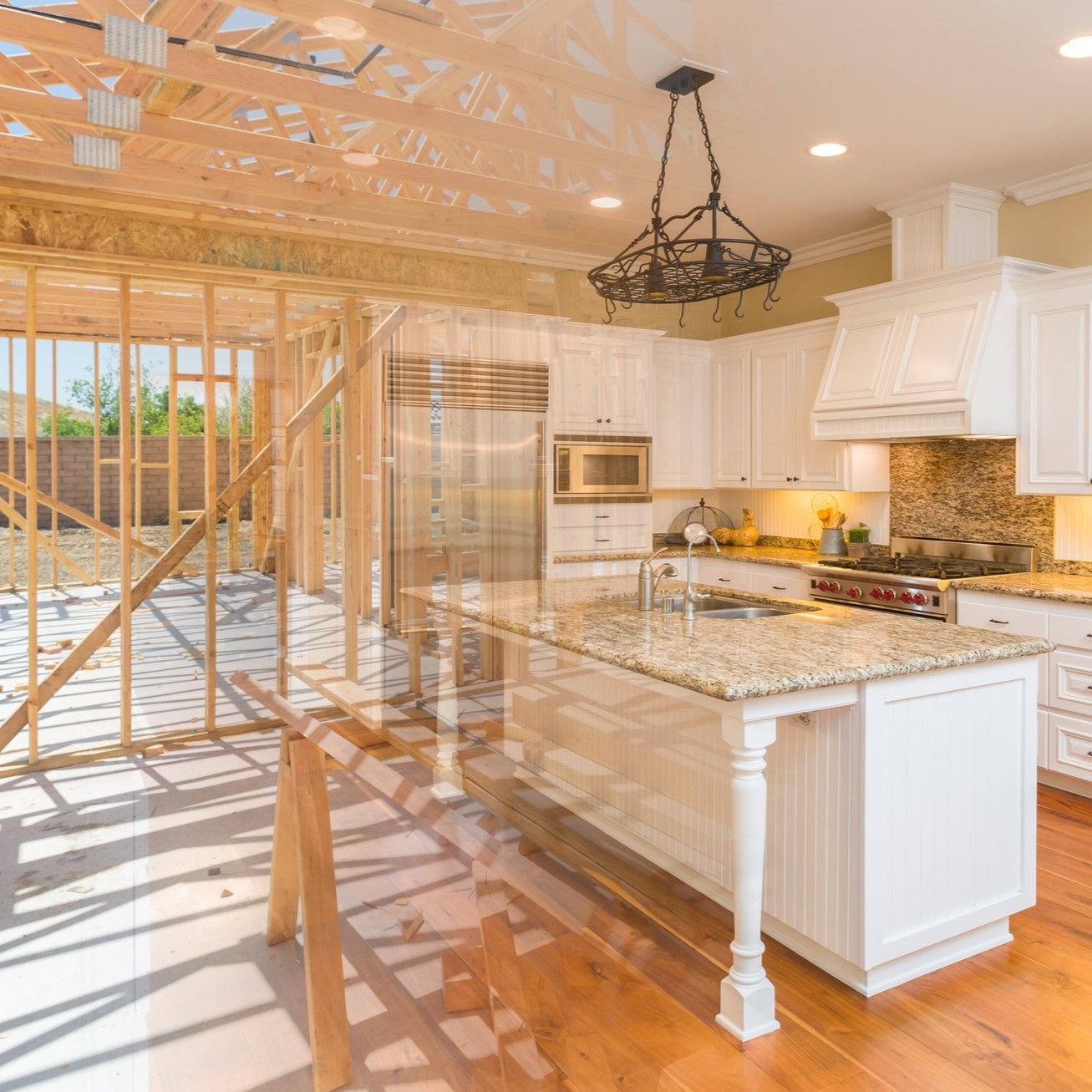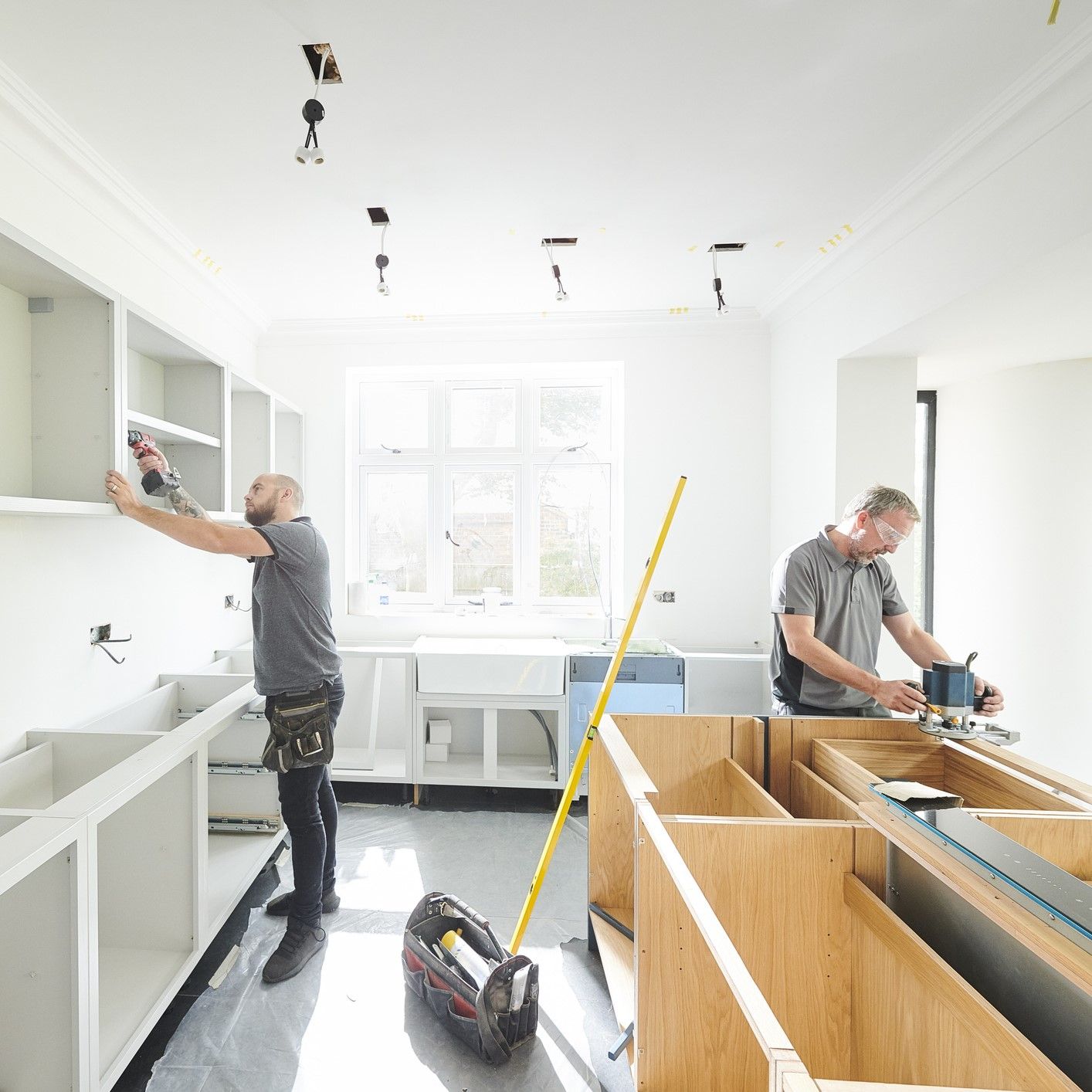Vinyl, Quartz & 9 More: Clean & Maintain Home Surfaces Like a Pro

Recently, one of our readers asked us to put up a tutorial on the best ways to maintain quartz surfaces. Why not go all out and create a cleaning and maintenance manual for the surfaces that are used in homes the most frequently?
Always refer to your countertop manufacturer’s guidelines, as some have warranties and/or specific handling and care instructions.
1. Wood
Daily: Dust first, then gather any loose debris. Make use of a lint-free cloth or a duster. Next, use a cloth or mop that is just slightly damp to clean the surfaces. Always wipe with the grain of the wood.
Long-term maintenance: Keep wood surfaces and furniture out of direct sunlight and keep them from getting too moist. On wooden tables, you should always use coasters. Regularly ventilate your home to avoid humidity buildup. If you have a lot of wood furniture and surfaces in damp regions of your home, you might want to think about buying a dehumidifier.
Depending on use, hardwood floors can be sanded down or recoated every seven years or so. When the flooring appears dull, it is a good indication that it needs to be recoated.
When waxing wood furniture, be sure to buff the surface thoroughly using a lint-free cloth. Every three months, this can be done. To avoid product buildup, buff the surface thoroughly.
Remove Stains: This technique can be used to get rid of recent heat or water stains. An iron must be heated at a low to medium temperature. Place it over a piece of lint-free cloth over the stain, and then wait a short while for the surface to warm up. If the stain is gone, check to make sure. Continue till it is gone.
2. Stainless Steel
Daily: A quick wipe down with a moist cloth will take care of your cleaning needs. Add some detergent if the mess is particularly filthy. If at all possible, wipe in the direction of the stainless steel grain (you can see the grains!). To avoid any water stains, always finish by wiping the stainless steel surface dry with a soft cloth. Avoid using scratch-causing cleaning agents like steel wool, scouring pads, brushes, and abrasive cleansers.
Long-term care: Think about performing a deeper clean every now and then on frequently used surfaces like stainless steel sinks. Choose a natural cleaning method by mixing water and baking soda into a paste, spreading it to the surface with a sliced lemon half or a soft cloth, rinsing it off, and then drying it.
For difficult stains, think about using a commercial product.
3. Quartz
Day-to-day: Quartz surfaces don't need a lot of upkeep because of its low porosity. Additionally, they don't need to be regularly waxed or sealed to keep their beauty. For routine cleaning, a soft cloth and clean water are all that are required. If you do use cleaning products, make sure they are gentle, diluted, and non-bleaching as well as non-abrasive.
Continuing care: Always use a trivet or heat pad before setting hot pots and pans on your quartz countertop, and avoid using sharp objects like knives or scissors directly on the material. Quartz is not stain-proof yet it is stain-resistant. Make sure to clean up accidents right away, especially if they involve foods or liquids that can cause stains, such wine, vinegar, soy sauce, or lemon juice. Avoid placing white quartz surfaces outdoors or in direct sunlight as they are especially susceptible to discoloration and fading when exposed to UV light over an extended period of time.
Removal of stains: With a little perseverance, you might be able to remove stains that are very difficult to remove by using dishwasher soap and a clean cloth. Consider combining white vinegar and water and letting it soak outside overnight before rinsing it off for a more natural approach.
4. Porcelain and Ceramic Tiles (& Grout)
Daily: To stop dirt or debris from damaging floor tiles, sweep and vacuum before mopping. Wipe down wall tiles with a solution of water and detergent. Don't forget to clean the grout as well.
Long-term maintenance: Steer clear of utilizing bleaching or abrasive cleaners on your tiled surfaces because they will likely fade the color and cause scratches. Make a paste with 1 part water and 3 parts baking soda to brighten grout. Let the mixture sit for 10 minutes before rinsing it off.
If all else fails, magic/melamine sponges can assist get rid of particularly tough stains. However, don't use them too frequently because they might leave tiny scratches on the surfaces of your tiles.
5. Natural Stone Such As Granite And Marble
Everyday cleaning with water and a light detergent typically suffices. To keep them shiny, dry them off with a lint-free cloth.
Continuing care: Always use a trivet before setting hot pots and pans on counters and stay away from cutting directly on natural surfaces. Because marble and granite are porous, make sure to clean up spills and stains very away. Regularly, ideally every few years, seal them. The frequency of use will determine how frequently the surface needs to be sealed. Pouring some water on the area will allow you to determine if the sealant has worn off. It needs to be sealed again if the water is absorbed.
Prior to using any stain-removal solutions, test the area on which the stain is located. Think about using natural remedies, such as mixing baking soda and water and letting it sit for the night before rinsing it off.
6. Paint
Day to day: Since paint composition varies between brands, it is advisable to study the manufacturer's recommendations on how to best care for your painted walls. The majority of painted walls only require periodic dusting with a feather duster or a vacuum with a soft brush attachment.
Long-term maintenance: Hairline cracks can develop over time as a result of poor paint quality, a shoddy paint job, or humidity-related natural contraction and expansion. If a hairline fissure appears over a painted wall, you should deepen it to remove any debris before filling it with a filling solution. After using a scraper to level the surface, let it dry for one or two days. You can sand the surface down and paint it after it has dried.
Remove stains with a clean cloth or sponge and a solution of water and diluted detergent for stubborn stains. If the stain still exists, repeat. With a lint-free cloth, remove any leftover material before.
7. Wallpaper
Day to day: A quick dusting every so often will do.
Long-term maintenance: Wallpaper that has been correctly installed should last 7 to 10 years. On the wallpaper, avoid using abrasive cleansers.
Removal of stains: Get rid of stains as soon as you can. Use a wrung-out, moist towel to gently brush away light stains. Use a non-abrasive sponge and a solution of detergent and water to work on tougher stains. For stronger stains, you might need to repeat the cleaning procedure many times. Avoid getting the wallpaper very damp.
8. Cement
Day to day: For daily cleaning, use a broom or a dry cloth. On occasion, use a moist towel or mop to clean the area.
Long-term maintenance: You should seal your cement screed surface frequently to prevent easy staining. However, sealing it does give it quite a deal of sheen, which might not be to your taste. On cement screed surfaces, cracks and chips can also develop over time, depending on usage, the state of the house, or whether your neighbor likes drilling into walls. As a result, they aren't entirely avoidable. For those with an open mind, the nicks and kinks that cement screed surfaces usually have are all a part of this material's charm.
Removal of stains: Sealing is the best form of prevention, but spills and stains should still be cleaned up very once. Use a multipurpose stain remover if the stain is particularly difficult to remove.
9. Laminate
Day to day: Unless the laminated surface is in a greasy environment like the kitchen, a wipe down with a moist towel will typically do. Clean those surfaces using a solution of water and dishwashing liquid. To prevent streaky stains, which can be particularly noticeable on glossy laminates, dry with a clean cloth. Consider dusting first to get rid of any debris lodged in the cracks of laminates with textures, such as woodgrains.
Long-term maintenance: Laminates are forgiving in general, but since they scratch readily, avoid using abrasive cleansers or brushes on them. You'll be able to maintain their brand-new appearance if you maintain a regular cleaning schedule—once per week is ideal for laminates in the kitchen. For laminated surfaces to resist warping or buckling, keep them dry. If water spills, clean them up right away.
Removing stains from laminated surfaces: Some manufacturers suggest applying a little amount of thinner to get rid of very tough spots. Use of cleaning products containing acid, alkali, or sodium hypochlorite may cause the laminated surface to erode or become discolored.
10. Glass
Day to day: Use a moist, lint-free cloth to wipe the glass surface. Avoid unwanted streaks by moving in a single direction, and move lightly to avoid scratches. Water marks can also be avoided with the use of a squeegee.
Maintenance and stain removal: Any grease or dirt stains on glass surfaces can be removed with the aid of a glass cleaning solution. Add a few drops of dishwashing liquid to 1 cup of water and 1 cup of distilled vinegar in a spray bottle to make a homemade cleaning solution. Particularly the vinegar component aids in removing grease, which is fantastic for kitchen glass windows.
11. Vinyl
Day to day: Before using a mop, first use a vacuum cleaner or brush to remove any dirt and debris from the vinyl flooring, just like with tiles (wrung as dry as possible). Regularly every week, a general household cleaner can be employed.
Long-term maintenance: Because vinyl is readily dented and scratched, you should try to avoid moving heavy furniture across it. If at all feasible, place soft carpets or rugs under furniture instead of ones with rubber backings, which can eventually discolor vinyl. Since vinyl is not waterproof but is water resistant, you should avoid flooding your vinyl flooring. This may result in problems with warping because water may enter into the joints.
Removal of stains: Baking soda and water can be combined to make a paste that can be applied to stains using a sponge to remove them. Repetition is required. Make sure to clean up any leftovers with a cleaning cloth and water afterward.
Disclaimer:
Always refer to the manufacturer's care instructions and warranty requirements. Advanced Builders & Contractors has been building custom luxury homes for over 17 years, we advise our clients to create a folder or binder to keep all surface care and appliance manuals organized and easy to refer to later on.
Recent Blog Posts








